Dr. Stuart D. Bale of the University of California, Berkeley spoke to MSRI’s Math Lovers Forum (mathlovers.msri.org) in March 2022. This event was hosted by Ashok & Gita Vaish and David Eisenbud.
The Origin and Structure of the Young Solar Wind: Parker Solar Probe ‘Touches the Sun
The NASA Parker Solar Probe mission has now made 11 orbits of the Sun and currently has its periapsis at 13.3 solar radii; its Keplerian speed at periapsis is nearly 160 km/s (~360,000 mph), the fastest ever human-made object. Parker Solar Probe was designed and implemented to crack the outstanding problem of coronal heating and the acceleration of the supersonic solar wind. I will describe our latest advances, including insights to the discrete sources of solar wind and the recent entry into the solar ‘magnetosphere’, where the expanding wind is still in causal contact with the Sun.
Presenter Bio
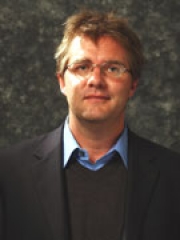 Stuart D. Bale received B.A. and Ph.D. degrees from the University of Minnesota in 1989 and 1994, respectively. After three years of postdoctoral work at Queen Mary College, University of London, he came to a research position at the Space Sciences Laboratory (SSL) at Berkeley. He joined the Physics faculty in 2004 and is the Director of SSL. He has held visiting appointments at the Observatoire de Paris, Meudon (Univ. Paris VII), LPCE/CNRS in Orleans, France, and the University of Sydney. He is a recipient of the 2003 Presidential Early Career Award for Scientists and Engineers (PECASE).
Stuart D. Bale received B.A. and Ph.D. degrees from the University of Minnesota in 1989 and 1994, respectively. After three years of postdoctoral work at Queen Mary College, University of London, he came to a research position at the Space Sciences Laboratory (SSL) at Berkeley. He joined the Physics faculty in 2004 and is the Director of SSL. He has held visiting appointments at the Observatoire de Paris, Meudon (Univ. Paris VII), LPCE/CNRS in Orleans, France, and the University of Sydney. He is a recipient of the 2003 Presidential Early Career Award for Scientists and Engineers (PECASE).


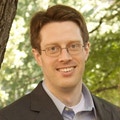 Will M. Farr earned his B.S. in Physics from Caltech in 2003 and his PhD from MIT in 2010. After a CIERA fellowship at Northwestern University, he joined the faculty at the University of Birmingham in 2013. In 2018 he moved to Stony Brook University and the Center for Computational Astrophysics (part of the Simons Foundation’s Flatiron Institute). He is an Associate Professor of Physics and Astronomy and the leader of the CCA’s Gravitational Wave Astronomy Group. He is a member of the LIGO Scientific Collaboration, an international collaboration of scientists studying gravitational waves detected by the LIGO instruments.
Will M. Farr earned his B.S. in Physics from Caltech in 2003 and his PhD from MIT in 2010. After a CIERA fellowship at Northwestern University, he joined the faculty at the University of Birmingham in 2013. In 2018 he moved to Stony Brook University and the Center for Computational Astrophysics (part of the Simons Foundation’s Flatiron Institute). He is an Associate Professor of Physics and Astronomy and the leader of the CCA’s Gravitational Wave Astronomy Group. He is a member of the LIGO Scientific Collaboration, an international collaboration of scientists studying gravitational waves detected by the LIGO instruments. Benjamin Seibold is an Associate Professor of Mathematics at Temple University, and the Director of the Center for Computational Mathematics and Modeling. His research combines mathematical analysis, computation and simulation, and experiments to answer questions about many real-world phenomena, including traffic flow, autonomous vehicles, fluid flows, radiation transport, and invasive species.
Benjamin Seibold is an Associate Professor of Mathematics at Temple University, and the Director of the Center for Computational Mathematics and Modeling. His research combines mathematical analysis, computation and simulation, and experiments to answer questions about many real-world phenomena, including traffic flow, autonomous vehicles, fluid flows, radiation transport, and invasive species.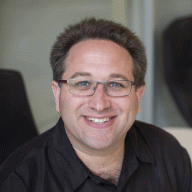 Scott Aaronson is David J. Bruton Centennial Professor of Computer Science at the University of Texas at Austin and director of its Quantum Information Center. He received his bachelor’s from Cornell University and his PhD from UC Berkeley. Before coming to UT Austin, he spent nine years as a professor in Electrical Engineering and Computer Science at MIT. Aaronson’s research in theoretical computer science has focused mainly on the capabilities and limits of quantum computers.
Scott Aaronson is David J. Bruton Centennial Professor of Computer Science at the University of Texas at Austin and director of its Quantum Information Center. He received his bachelor’s from Cornell University and his PhD from UC Berkeley. Before coming to UT Austin, he spent nine years as a professor in Electrical Engineering and Computer Science at MIT. Aaronson’s research in theoretical computer science has focused mainly on the capabilities and limits of quantum computers.
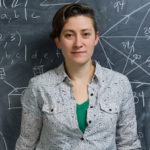 Moon Duchin is an Associate Professor of mathematics at Tufts University and serves as director of Tufts’ interdisciplinary
Moon Duchin is an Associate Professor of mathematics at Tufts University and serves as director of Tufts’ interdisciplinary 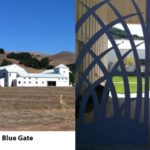 On November 19, 2017, the
On November 19, 2017, the